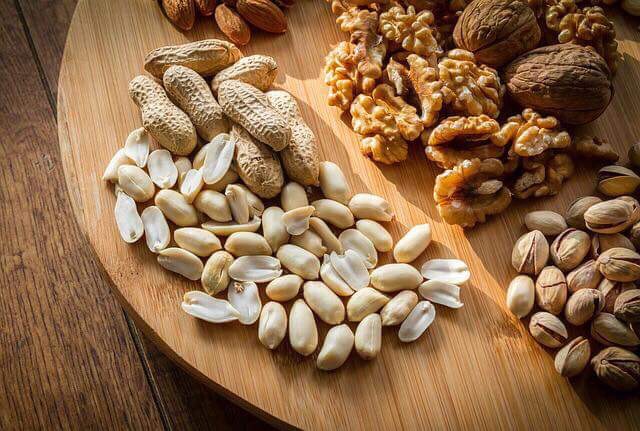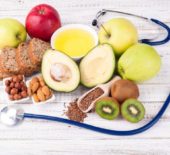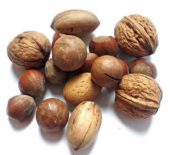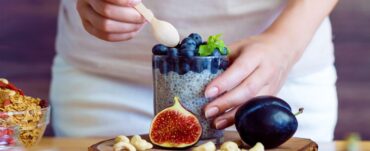To me activated nuts sound like a line out of a kids TV show to bring down the baddies. Something like ‘Power Rangers Go!’ If you are wondering what activated nuts are all about and what it means then read on.
The theory behind activation of nuts?
When nuts are soaked in water for a period of time they begin to germinate, or start to transform to be ready to sprout, seed and grow into a plant. This process changes the way the carbohydrates, proteins, fats and other minerals, vitamins and antioxidants interact.
Why is activation of nuts important?
The benefit of activating nuts is it may reduce the phytate component in the nuts. Phytates can stop your body absorbing the minerals zinc and iron. Phytates are not all bad though and are classified as an antioxidant which helps reduce the risk of cancer and other forms of diseases caused by inflammation in your body. The evidence to support the activation of nuts to reduce the amount of phytate varies
Is activating nuts necessary?
It really depends on where you live and your diet. In some cultures and diets that have which have high amounts of foods with phytates in them such as corn and other grains, in combination with foods low in zinc and iron, soaking the nuts to reduce the phytate content can be important to make sure any iron and zinc available from the food is absorbed in your body. However, in a typical well balanced western based diet it may not be necessary.
Take home message: Everyone has different needs and if you are following a diet which is low in iron and zinc and high in phytate rich plant foods you may want to consider activating your nuts. If you are still confused book in with a Dietitian who can assess your diet and individual needs.
References:
- Azeke AA, Egielewa SJ, Eigebogbo MU, Godwin I (2011). Effect of germination on the phytase activity, phytate and total phosphorus contents of rice (Oryza sativa), maize (Zea mays), millet (Panicum miliaceum) sorghum (Sorghum bicolour) and wheat (Triticum aestivum). J Food Sci Tech, 48 (6): 724-729.
- Khattak AB, ZEb A, Bibi N, Khattak SA (2007). Influenece of germination techniques on phytic acid and polyphenol content of chickpea (cicer arietinium L.) sprouts. Food Chemistry, 104(3): 1074-1079.
- Kumar V, Sinha AK, Makar HPS, Becker K (2010). Dietary roles of phytate and phytase in human nutrition: a review. Food Chemistry, 120(4): 945-959.
- Liang J, Han B-Z, Nout MJR, Hamer RJ (2009). Effect of soaking and phytase treatment on phytic acid, calcium, iron, and zinc in rice fractions. Food Chemistry, 115(3): 789-794.
- Liang J, Han B-Z, Nout MJR, Hamer RJ (2008). Effects of soaking, germination and fermentation on phytic acid, total and in vitro soluble zinc in brown rice. Food Chemistry 110(4): 821-828.
- Mubarak AE (2005). Nutritional composition and antinutritional factors of (Phaseolus aureus) as affected by some home traditional processes. Food Chemistry, 89(4):489-495
- Sokrab AM, Ahmed IAM, Babiker EE (2012). Effect of germination on antinutritional factors, total, and extrataqble mineral of high an low phytate corn (Zea mays L.) genotypes. J Saudi Soc Ag Sci 11:123-128.
- Azeke AA, Egielewa SJ, Eigebogbo MU, Godwin I (2011). Effect of germination on the phytase activity, phytate and total phosphorus contents of rice (Oryza sativa), maize (Zea mays), millet (Panicum miliaceum) sorghum (Sorghum bicolour) and wheat (Triticum aestivum). J Food Sci Tech, 48 (6): 724-729.
- Mubarak AE (2005). Nutritional composition and antinutritional factors of mung bean (Phaseolus aureus) as affected by some home traditional processes. Food Chemistry, 89(4):489-495
- Sokrab AM, Ahmed IAM, Babiker EE (2012). Effect of germination on antinutritional factors, total, and extractable mineral of high and low phytate corn (Zea mays L.) genotypes. J Saudi Soc Ag Sci 11:123-128
- Khattak AB, ZEb A, Bibi N, Khattak SA (2007). Influence of germination techniques on phytic acid and polyphenol content of chickpea (Cicer arietinium L.) sprouts. Food Chemistry, 104(3): 1074-1079.








